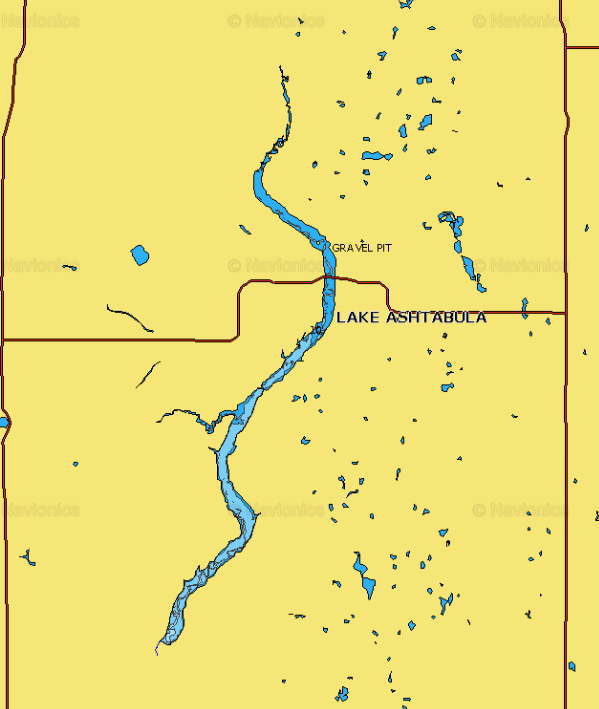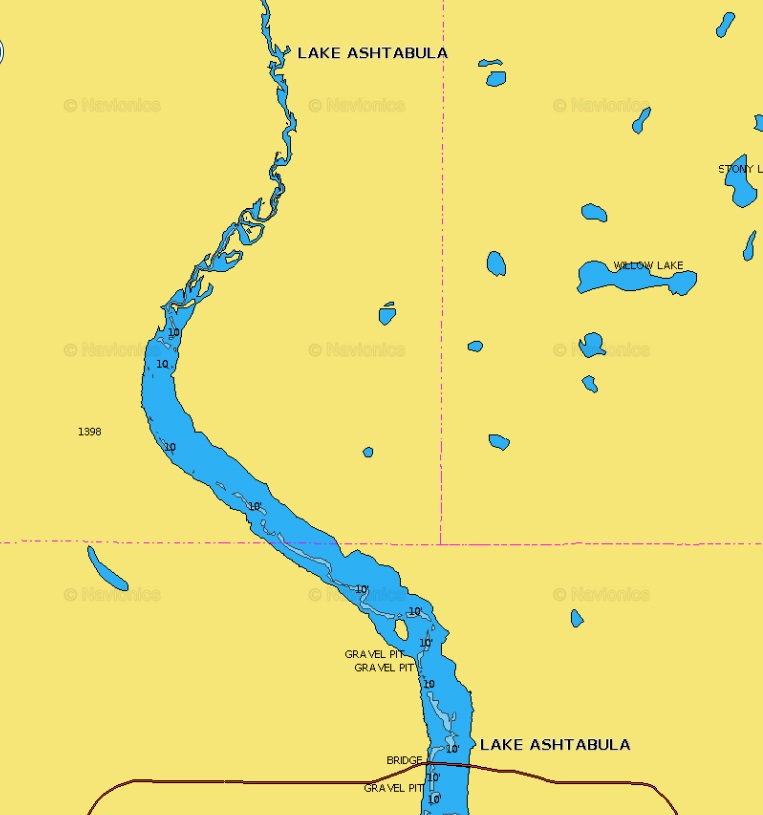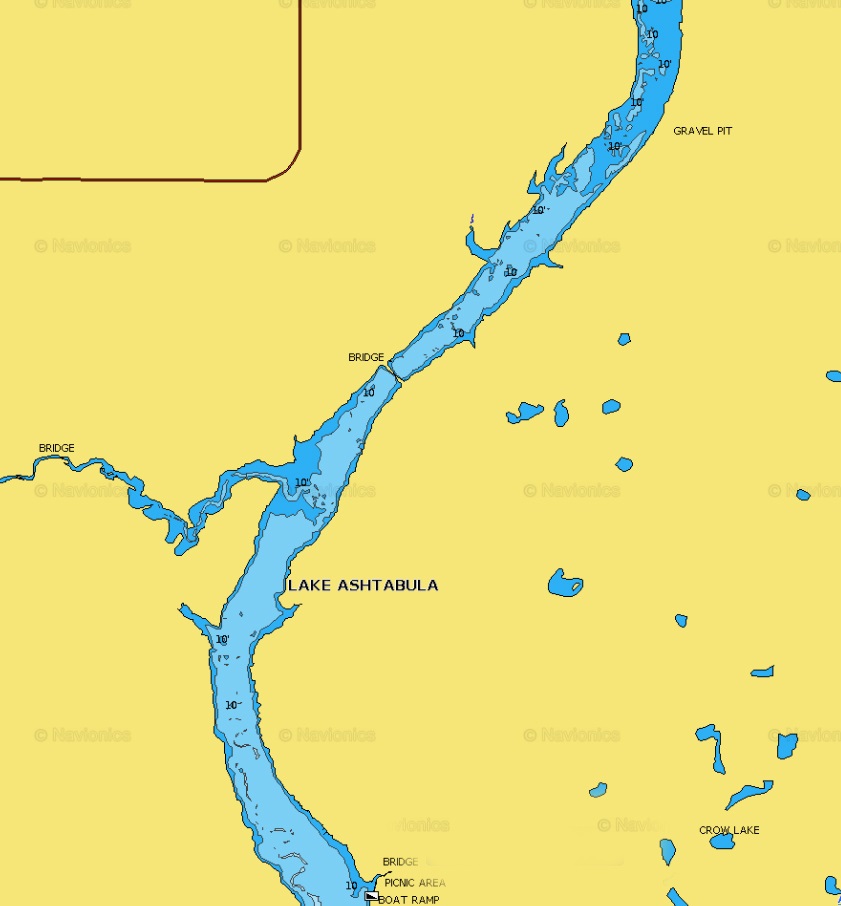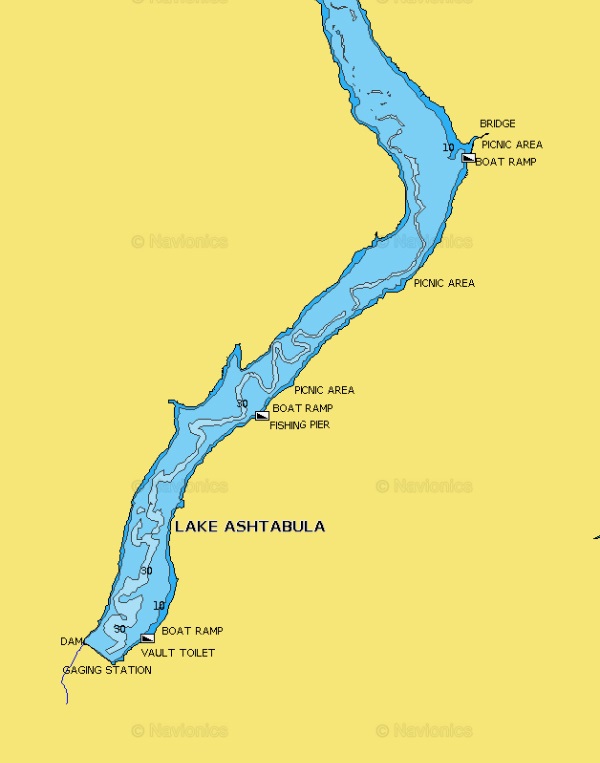
Nestled in a scenic river valley just 12 miles northwest of Valley City, North Dakota, Lake Ashtabula is a picturesque manmade impoundment on the Sheyenne River. The reservoir offers anglers ample opportunities to catch a variety of gamefish species.
Walleyes, smallmouth bass, and northern pike are the predominant predators,” says Northland Fishing Tackle’s Cody Roswick. Proprietor of Fin Hunter’s Guide Service, Roswick fishes Ashtabula year-round, and notes, “There are also a lot of white bass, and you can get into some quality-sized yellow perch as well.”
The impoundment was created by the completion of Baldhill Dam back in 1950, but the fishery has never forgotten its riverine roots. “Ashtabula fishes more like a river than a reservoir,” says Roswick. “The lake is long and narrow, with a drowned river channel meandering along its entire length. There is always some current, and the fish are very current oriented.”
The name “Ashtabula” is a Native American word meaning “Fish River,” which suits the lake’s fish population. And with seven boat ramps, two accessible fishing piers, and four automated fish cleaning stations, the lake is also decidedly fishing friendly.
Also notable about Lake Ashtabula is that a sub-station of the Valley City National Fish Hatchery is located below Baldhill Dam. The hatchery is one of two federal fish hatcheries responsible for providing quality fishing opportunities in North Dakota and throughout the Great Plains Region.
Fishing Tactics
“If you look at a lake map, the river channel snakes back and forth in the reservoir,” says Roswick. “The inside and outside turns are fish-holding areas, and there is a predominant lip from the old river channel everywhere. The north end of the lake is shallower, around 5 to 12 feet, and the water gradually gets deeper the closer you get to the dam.”
Following are a few of Roswick’s favorite seasonal spots and presentations.

1. In the spring, Roswick targets the north end of the lake. “I do a lot of casting with a ¼- or 3/8-ounce Northland Fishing Tackle RZ Jig tipped with a flavored, soft-plastic swimbait like a Paddle Minnow” he says.
Roswick reports small flats off the main river channel often attract a mix of gamefish. “Fancast, making slow retrieves along the bottom,” he says. “Give the jig a little hop here and there to liven up the presentation.”

2. “The fish get more active in the midsection of the lake during the summertime,” he explains. “Look for them setting up on the river channel edges and along shoreline weedlines.”
One of Roswick’s go-to summer presentations is pulling a spinner rig tipped with a leech or half nightcrawler behind a Northland Rock-Runner® Bottom Bouncer. “You can also do very well casting a Whistler Jig® and IMPULSE® softbait along the weedlines. The water has a little stain to it, so the combination of flash, thump, and vibration helps fish find your lure.”

3. “During the fall, the lower portion of the reservoir is the center of most fish activity,” says Roswick. “Here, too, the river channel is the focal point of much of the action, particularly along the bottom and edges of the channel.” Roswick’s autumn repertoire includes a variety of tactics, including vertical jigging and slow-trolling a Northland Puppet Minnow, “not tipped with anything.”
4. During the ice-fishing season, Roswick moves back to Ashtabula’s midsection, where he focuses on channel edges along inside and outside river bends. “You can catch good numbers of white bass and perch on Northland Fishing Tackle’s Fire-Ball® Jig, tipped with a waxworm,” he promises. “For walleyes, try a Buck-Shot® Rattle Spoon dressed with a minnow head, or a Puppet Minnow® with a few waxworms or maggots dangling off the treble hook.”
Vital Stats
Lake Ashtabula
Surface Area: 5,174.3 acres
Maximum Depth: 45.2 feet
Average Depth: 13.7 feet
Shoreline: 73.1 miles
Fish Species Present: black bullhead, bluegill, black crappie, northern pike, smallmouth bass walleye, white bass, yellow perch.

